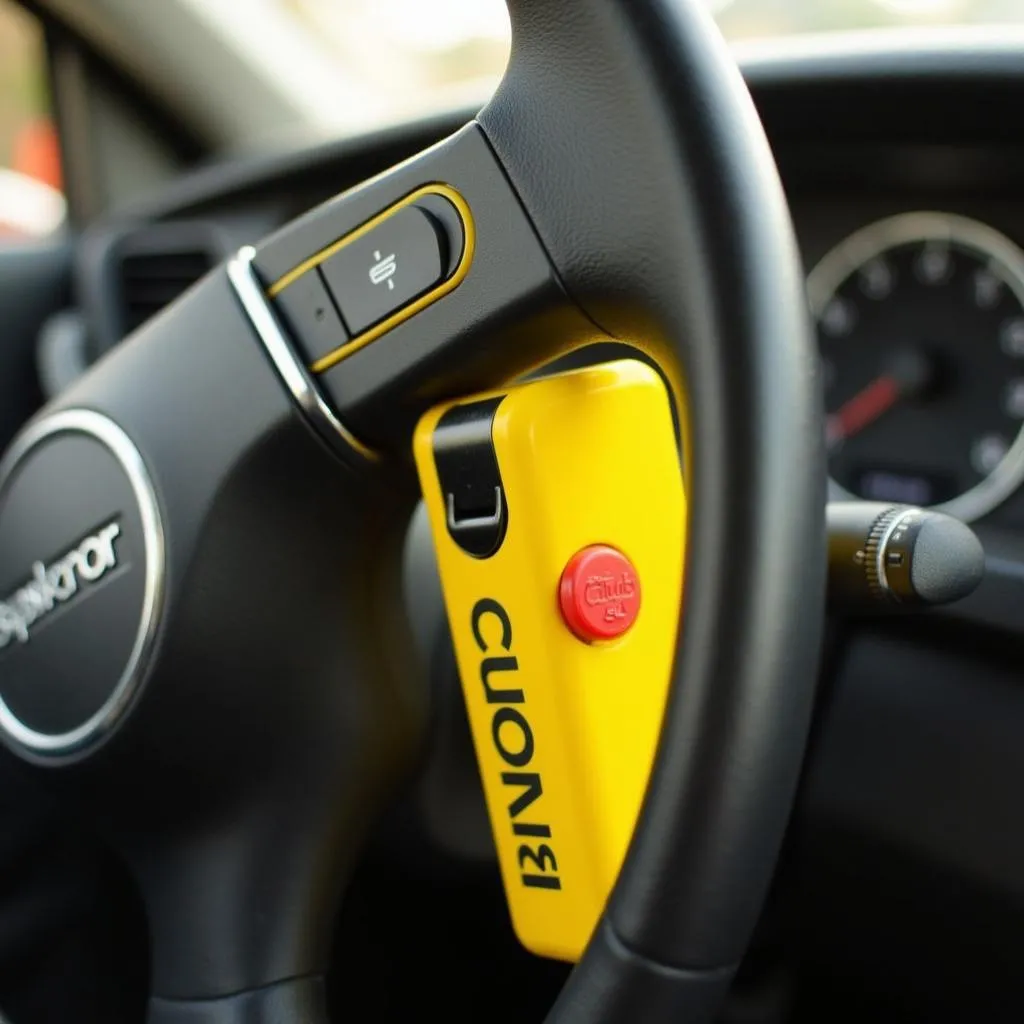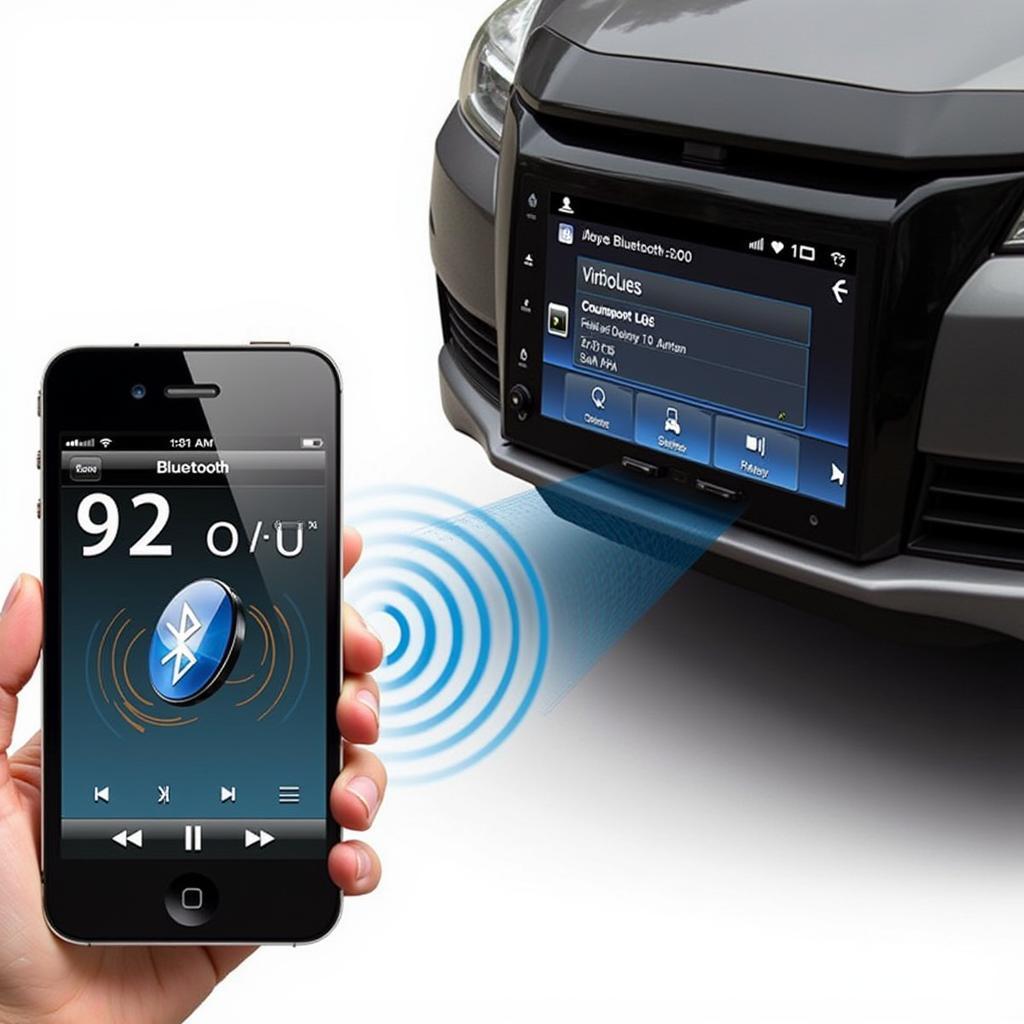That pesky brake warning light glaring at you from your 1995 Chevy truck’s dashboard? Don’t panic. Understanding why your 1995 Chevy truck brake warning light is on is crucial for your safety and the longevity of your vehicle. This comprehensive guide will walk you through common causes, troubleshooting steps, and potential solutions to get you back on the road safely.
Common Causes of a 1995 Chevy Truck Brake Warning Light
Several factors can trigger the brake warning light in a 1995 Chevy truck. These range from simple issues like low brake fluid to more complex problems requiring professional attention. Let’s explore the most common culprits:
- Low Brake Fluid: This is the most frequent cause. Over time, brake fluid levels can decrease due to normal wear and tear or leaks in the brake system.
- Worn Brake Pads: As your brake pads wear down, the brake fluid level in the master cylinder drops. This triggers the warning light.
- Faulty Brake Light Switch: This switch activates the brake lights when you press the pedal. A malfunctioning switch can also trigger the brake warning light.
- ABS Issues: If your truck has Anti-lock Brakes (ABS), a problem with the ABS system can illuminate the brake warning light.
- Parking Brake Engaged: Sometimes, the simplest explanation is the right one. Ensure your parking brake is fully released.
- Master Cylinder Problems: A leaking or failing master cylinder can lead to a loss of brake pressure and trigger the warning light.
Troubleshooting Your 1995 Chevy Truck Brake Warning Light
Before rushing to a mechanic, you can perform some basic troubleshooting steps.
-
Check the Parking Brake: Ensure the parking brake is fully disengaged.
-
Inspect Brake Fluid Level: Open the hood and locate the master cylinder. Check the brake fluid level. If it’s low, add the correct type of brake fluid as specified in your owner’s manual.
-
Check for Leaks: Inspect the brake lines and connections for any signs of leaks. Look for wet spots or drips around the master cylinder, brake calipers, and wheel cylinders.
-
Test Your Brake Lights: Have someone observe the brake lights while you press the brake pedal. If the brake lights don’t illuminate, the brake light switch may be faulty.
When to Seek Professional Help
If your brake warning light remains on after performing these checks, or if you notice any unusual braking behavior, it’s crucial to seek professional help immediately. Driving with a faulty brake system is extremely dangerous.
What if my brake pedal feels spongy?
A spongy brake pedal often indicates air in the brake lines, which requires bleeding the brakes. This is best left to a professional.
Can I drive with the brake warning light on?
It’s highly discouraged to drive with the brake warning light on. This indicates a potential problem with your braking system, which could lead to brake failure.
 1995 Chevy Truck Brake System Diagram
1995 Chevy Truck Brake System Diagram
“A properly functioning brake system is paramount for safety,” says veteran automotive technician, Robert Hernandez. “Never ignore a brake warning light. It’s always better to err on the side of caution.”
Conclusion
Addressing a 1995 Chevy truck brake warning light promptly is vital for ensuring your safety and preventing further damage to your vehicle. By understanding the common causes and following the troubleshooting steps outlined above, you can effectively address the issue. However, remember that professional assistance is crucial if the problem persists. Don’t delay addressing your 1995 Chevy truck brake warning light—your safety depends on it.
“Regular maintenance is key to preventing brake issues,” adds Hernandez. “Routine brake inspections and fluid changes can save you headaches and costly repairs down the road.”
FAQ
- What type of brake fluid should I use in my 1995 Chevy truck? Consult your owner’s manual for the recommended brake fluid type.
- How often should I change my brake fluid? Generally, it’s recommended to change your brake fluid every two to three years.
- How much does it cost to replace brake pads on a 1995 Chevy truck? The cost varies depending on the type of brake pads and labor rates.
- Can I replace brake pads myself? Yes, with the right tools and knowledge, you can replace brake pads yourself.
- What are the symptoms of a bad master cylinder? Symptoms include a spongy brake pedal, low brake fluid, and a brake warning light.
- How do I bleed my brakes? Bleeding brakes involves removing air from the brake lines. It’s best to consult a repair manual or have a professional perform this procedure.
- What is ABS and how does it work? ABS stands for Anti-lock Braking System. It prevents wheel lockup during hard braking, allowing you to maintain steering control.



